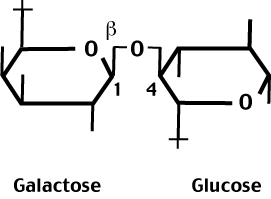Basic Gene Structure
an enzyme - a DNA-dependant RNA polymerase,
and a template - the DNA which determines the linear sequence of N-bases in the newly synthesized RNA.
Lets start by looking at the basic features of a gene - a unit of heritable information.
This definition allows us to identify two elements of a gene:
[Regulatory] --- [Structural]
The structureal region encodes the gene function - be it a functional RNA or an encoded protein.
The structural region always appears in the RNA population.
One might argue that introns are not part of the structural region as they don't appear in the mRNA. However, they do appear in the hn-RNA population (the primary transcripts in eukaryotes) (hn=heterogeneous nuclear).
The regulatory region directs the appropriate
temporal (when) and spatial (where)
expression pattern of the adjacent structural region.
we might as well introduce our model system and look at its structure here while we are looking at gene structure.
The lac operon of E. coli is a genetic unit that encodes the biochemical pathway that allows the bacterium to utilize lactose as a carbon-source.
Lactose is a disaccharide made up of a galactose and a glucose linked in a beta-1,4 glycosidic linkage.
In E. coli, the transport of lactose across the cell membrane requires a second gene - lac Y - which encodes the permease.
A third function- transacetylase - is encoded by lac A.
These three proteins constitute the biochemical pathway for lactose utilization.

The term - OPERON - refers to a set of structural regions (usually encoding proteins) which are clustered together and whose expression is under the control of a single regulatory region. The overall structure of the lac operon is illustrated below:

In 'standard' terminology, each protein coding unit is called a cistron.
Since the entire operon is expressed as a single mRNA from a common regulatory region, the primary transcript encodes three separate proteins. Such a message is called polycistronic.
What is the rationale for the operon organization of multiple coding regions under the control of a common regulatory region?
Two rationales are commonly offered.
The first emphasizes the coordinate regulation of multiple functions required for a single biochemcial pathway. Since all three functions are required, its makes energetic sense to express all three from a single mRNA.
The second rationale emphasizes recent evidence for the lateral transmission of heritable information between individuals. This rationale suggests that the three functions are clustered together to facilitate their transfer as a complete unit rather than as individual units. This allows the transfer of a complete functional biochemical pathway rather that individual functions which are ineffective in isolation.
Transcription